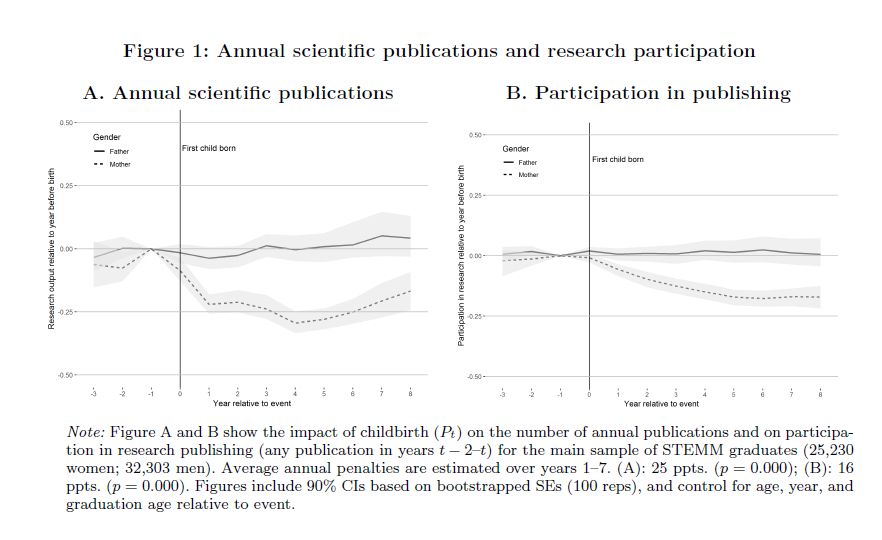
Sage Journals: Discover world-class research
Subscription and open access journals from Sage, the world's leading independent academic publisher.
We neurologists fall in love with our hypotheses: they never die. The latest: Depending on where Lewy pathology is first found, one of 2 #Parkinsons types exists. @ajlees and I explain the newest inconsistency in this “brain-first/body-first” hypothesis.
journals.sagepub.com/doi/10.1177/...
19.09.2025 19:03 — 👍 3 🔁 3 💬 0 📌 0

🚨 New WP! 📄 "Publish or Procreate: The Effect of Motherhood on Research Performance" (w/ @valentinatartari.bsky.social
👩🔬👨🔬 We investigate how parenthood affects scientific productivity and impact — and find that the impact is far from equal for mothers and fathers.
22.05.2025 08:03 — 👍 205 🔁 100 💬 2 📌 7

Postdoc in cognitive neuroscience - Vacancy at Aarhus University
Vacancy at School of Communication and Culture - Linguistics, Cognitive Science and Semiotics, Dept. of, Aarhus University
Dear colleagues of the MEG community
I have recently commenced a project at Aarhus University, Denmark, called: Re-integration of the cerebellum. Therefore, I am recruiting a Postdoc for 2½ years to begin September 1st 2025. The deadline is March 20th 2025.
international.au.dk/about/profil...
13.02.2025 14:26 — 👍 22 🔁 15 💬 0 📌 3

A scientific figure with two panels. On the left, a horizontal bar chart with patients 1-17 numbered on the y-axis, and the strength of dopamine alignment (i.e., pls weights) on the x-axis, which indicates the amount of cortical dopamine-system response to dopamine replacement therapies. The bars are sorted and colored with the strongest alignment on top and lowest alignment on bottom. Arrows extend from the top and bottom bars to brain maps showing strong and weak beta-frequency rhythmic dopamine responses, respectively, in inferior frontal and superior temporal cortices. On the right, a scatterplot shows a positive linear relationship between dopamine alignment (on the x-axis) and change in motor symptom response (on the y-axis, with higher/less-negative values indicating less symptom improvement). Statistics overlaid on the scatterplot indicate a correlation coefficient (r) of .64 and a p-value of .007.
New pre-print! 🎉
www.medrxiv.org/content/10.1...
We use a MEG with a PLS-neuromaps "search" of off-target cortical effects of dopamine therapies in patients with #Parkinson's disease
A strong beta-rhythmic activation of dopamine-rich cortices in response to medication ▶️ worse clinical response
23.11.2024 21:25 — 👍 8 🔁 3 💬 1 📌 1
Would be approximately half the price for assisted use at NatMEG in Stockholm, even less if you run the scans yourself.
21.11.2024 12:25 — 👍 1 🔁 0 💬 0 📌 0




